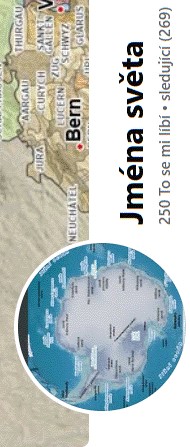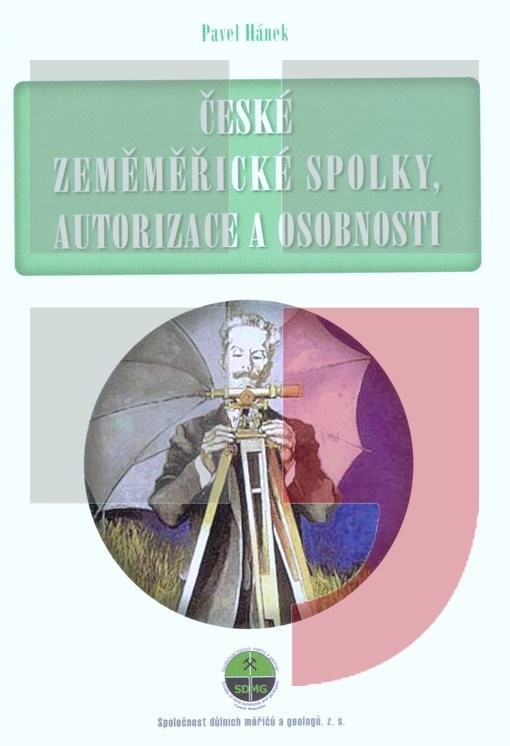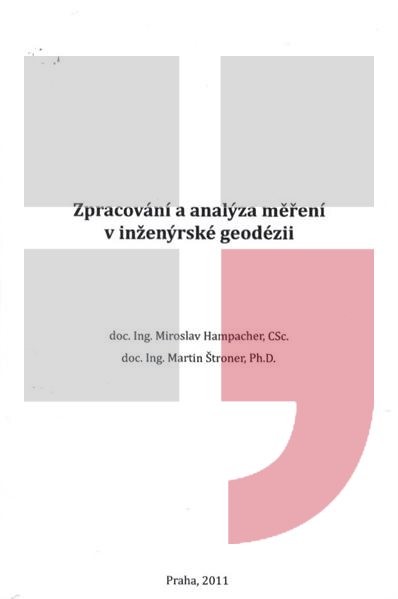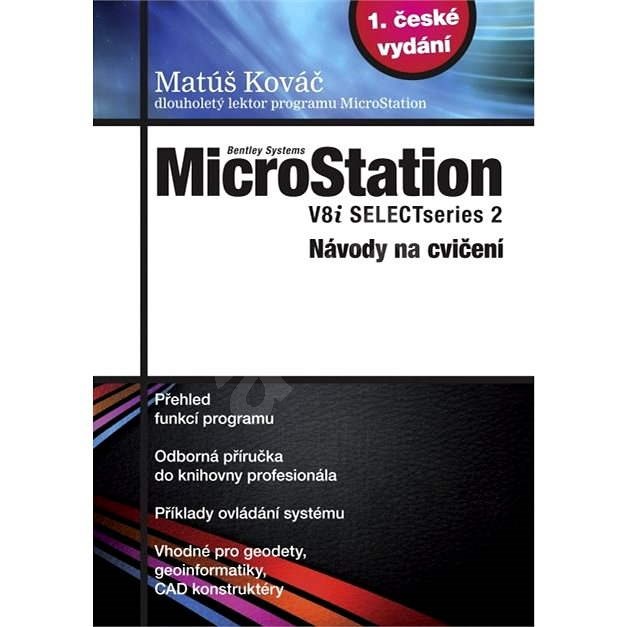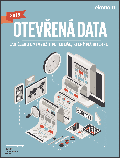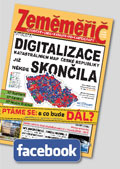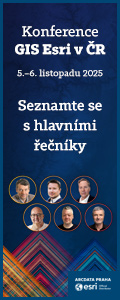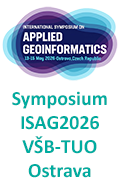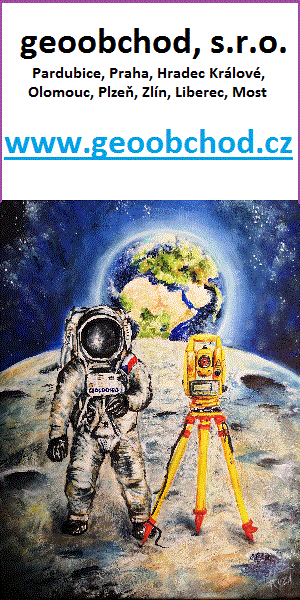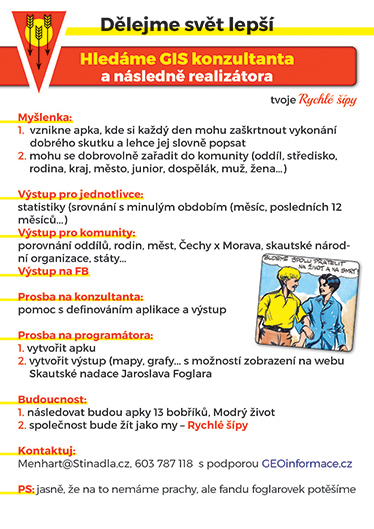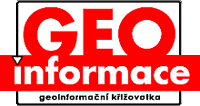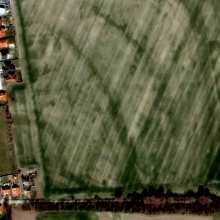zprávy
zdroje zpráv:20160630Oznámení na odborný/vrchní referent oddělení aktualizace popisných informací-KP Praha-východ
30.6.2016 12:04 ČÚZK /Urady/Katastralni-urady/Katastralni-urady/Katastralni-urad-pro-Stredocesky-kraj/Katastralni-pracoviste/KP-Praha-vychod/O-uradu/Aktuality/20150901Oznameni-o-vyhlaseni-vyberoveho-rizeni-(2)20160630Oznámení odborný/vrchní referent oddělení aktualizace popisných informac.-KP Praha-východ
30.6.2016 12:03 ČÚZK /Urady/Katastralni-urady/Katastralni-urady/Katastralni-urad-pro-Stredocesky-kraj/O-uradu/Aktuality/20150901Oznameni-o-vyhlaseni-vyberoveho-rizeni-(8)20160630Odborný/vrchní referent oddělení obnovy a revize katastru nemovitostí_2-KP Praha-východ
30.6.2016 12:03 ČÚZK - předpisy a opatření V části "Úřední deska", v sekci "Oznámení a jiná úřední sdělení" bylo vystaveno "Oznámení o vyhlášení výběrového řízení na služební místo Odborný/vrchní referent oddělení obnovy a revize katastru nemovitostí_2 pro Katastrální pracoviště Praha-východ"20160630Odborný/vrchní referent oddělení aktualizace popisných informací katastru ne-KP Praha-východ
30.6.2016 12:03 ČÚZK - předpisy a opatření V části "Úřední deska", v sekci "Oznámení a jiná úřední sdělení" bylo vystaveno "Oznámení o vyhlášení výběrového řízení na služební místo Odborný/vrchní referent oddělení aktualizace popisných informací katastru nemovitostí II. pro Katastrální pracoviště Praha-východ"20160630Oznámení odborný/vrchní referent oddělení aktualizace popisných informac.-KP Praha-východ
30.6.2016 12:03 ČÚZK - předpisy a opatření V části "Úřední deska", v sekci "Oznámení a jiná úřední sdělení" bylo vystaveno "Oznámení o vyhlášení výběrového řízení na služební místo odborný/vrchní referent oddělení aktualizace popisných informací katastru nemovitostí I. pro Katastrální pracoviště Praha-východ"20160630Odborný/vrchní referent oddělení obnovy a revize katastru nemovitostí_2-KP Praha-východ
30.6.2016 12:03 ČÚZK /Urady/Katastralni-urady/Katastralni-urady/Katastralni-urad-pro-Stredocesky-kraj/O-uradu/Aktuality/20150901Oznameni-o-vyhlaseni-vyberoveho-rizeni-(8)20160630Odborný/vrchní referent oddělení aktualizace popisných informací katastru ne-KP Praha-východ
30.6.2016 12:03 ČÚZK /Urady/Katastralni-urady/Katastralni-urady/Katastralni-urad-pro-Stredocesky-kraj/O-uradu/Aktuality/20150901Oznameni-o-vyhlaseni-vyberoveho-rizeni-(8)V části Zajímavé stránky byl d
30.6.2016 12:00 Plzeňský kraj V části Zajímavé stránky byl doplněn odkaz na Mapu aktivity klíšťat na území České republiky a odkaz na Mapu přírodních ohnisek zoonóz přenosných na člověka. Ve složce Mapy a stránky pro volný čas byl pak uveřejněn odkaz na stránky STRAVA - záznam běhu a jízdy na kole.V části Zajímavé stránky (http
30.6.2016 12:00 Plzeňský kraj V části Zajímavé stránky (http://geoportal.plzensky-kraj.cz/gs/zajimave-stranky/) byl doplněn odkaz na Mapu aktivity klíšťat na území České republiky (https://www.kliste.cz/cz/mapa-aktivity) a odkaz na Mapu přírodních ohnisek zoonóz přenosných na člověka (http://web.natur.cuni.cz/gis/klistata/projekt_mapa.html). Ve složce Mapy a stránky pro volný čas (http://geoportal.plzensky-kraj.cz/gs/mapy-pro-volny-cas/) byl pak uveřejněn odkaz na stránky STRAVA - záznam běhu a jízdy na kole (http://labs.strava.com/heatmap/#10/13.18222/49.62717/yellow/both).20160630Oznámení odborný/vrchní referent oddělení aktualizace popisných informac.-KP Praha-východ
30.6.2016 11:58 ČÚZK - předpisy a opatření V části "Úřední deska", v sekci "Oznámení a jiná úřední sdělení" bylo vystaveno "Oznámení o vyhlášení výběrového řízení na služební místo odborný/vrchní referent oddělení aktualizace popisných informací katastru nemovitostí I. pro Katastrální pracoviště Praha-východ"20160630Odborný/vrchní referent oddělení dokumentace katastru nemovitostí-KP Praha-východ
30.6.2016 11:58 ČÚZK /Urady/Katastralni-urady/Katastralni-urady/Katastralni-urad-pro-Stredocesky-kraj/O-uradu/Aktuality/20150901Oznameni-o-vyhlaseni-vyberoveho-rizeni-(7)20160630Odborný/vrchní referent oddělení dokumentace katastru nemovitostí-KP Praha-východ
30.6.2016 11:58 ČÚZK - předpisy a opatření V části "Úřední deska", v sekci "Oznámení a jiná úřední sdělení" bylo vystaveno "Oznámení o vyhlášení výběrového řízení na služební místo Odborný/vrchní referent oddělení dokumentace katastru nemovitostí pro Katastrální pracoviště Praha-východ"20160630Odborný/vrchní referent oddělení obnovy a revize katastru nemovitostí_1-KP Praha-východ
30.6.2016 11:58 ČÚZK /Urady/Katastralni-urady/Katastralni-urady/Katastralni-urad-pro-Stredocesky-kraj/O-uradu/Aktuality/20150901Oznameni-o-vyhlaseni-vyberoveho-rizeni-(7)20160630Odborný/vrchní referent oddělení obnovy a revize katastru nemovitostí_1-KP Praha-východ
30.6.2016 11:58 ČÚZK - předpisy a opatření V části "Úřední deska", v sekci "Oznámení a jiná úřední sdělení" bylo vystaveno "Oznámení o vyhlášení výběrového řízení na služební místo Odborný/vrchní referent oddělení obnovy a revize katastru nemovitostí_1 Katastrální pracoviště Praha-východ"20160630Oznámení odborný/vrchní referent oddělení aktualizace popisných informac.-KP Praha-východ
30.6.2016 11:58 ČÚZK /Urady/Katastralni-urady/Katastralni-urady/Katastralni-urad-pro-Stredocesky-kraj/O-uradu/Aktuality/20150901Oznameni-o-vyhlaseni-vyberoveho-rizeni-(7)20160602Oznámení na odborný rada – právník katastru nemovitostí-KP Praha-východ (1)
30.6.2016 11:58 ČÚZK /Urady/Katastralni-urady/Katastralni-urady/Katastralni-urad-pro-Stredocesky-kraj/O-uradu/Aktuality/20150901Oznameni-o-vyhlaseni-vyberoveho-rizeni-(7)Odborný/vrchní referent oddělení aktualizace popisných informací katastru nemovitostí II.
30.6.2016 11:55 ČÚZK - předpisy a opatření Katastrální úřad pro Středočeský kraj Katastrální pracoviště Praha-východvypisuje výběrové řízení na místo Odborný/vrchní referent oddělení aktualizace popisných informací
Odborný/vrchní referent oddělení aktualizace popisných informací katastru nemovitostí II.
Odborný/vrchní referent oddělení aktualizace popisných informací katastru nemovitostí II.
30.6.2016 11:55 ČÚZK - volná místa Katastrální úřad pro Středočeský kraj, Katastrální pracoviště Praha-východ vypisuje výběrové řízení na místo Odborný/vrchní referent oddělení aktualizace popisných informací katastru nemovitostí II.Odborný/vrchní referent oddělení obnovy a revize katastru nemovitostí_2
30.6.2016 11:55 ČÚZK - předpisy a opatření Katastrální úřad pro Středočeský kraj Katastrální pracoviště Praha-východvypisuje výběrové řízení na místo Odborný/vrchní referent oddělení obnovy a revize katastru nemovito
Odborný/vrchní referent oddělení obnovy a revize katastru nemovitostí_2
Odborný/vrchní referent oddělení aktualizace popisných informací katastru nemovitostí I. (2)
30.6.2016 11:55 ČÚZK - volná místa Katastrální úřad pro Středočeský kraj, Katastrální pracoviště Praha-východ vypisuje výběrové řízení na místo Odborný/vrchní referent oddělení aktualizace popisných informací katastru nemovitostí I. (2)Odborný/vrchní referent oddělení aktualizace popisných informací katastru nemovitostí II.
30.6.2016 11:55 ČÚZK /Urady/Katastralni-urady/Katastralni-urady/Katastralni-urad-pro-Stredocesky-kraj/Uredni-deska/Oznameni-a-jina-uredni-sdeleni/Volna-mista/Odborny-vrchni-referent-oddeleni-aktualizace-p-(2)Oodborný/vrchní referent oddělení aktualizace popisných informací katastru nemovitostí II.
30.6.2016 11:55 ČÚZK /Urady/Katastralni-urady/Katastralni-urady/Katastralni-urad-pro-Stredocesky-kraj/Uredni-deska/Oznameni-a-jina-uredni-sdeleni/Volna-mista/Odborny-vrchni-referent-oddeleni-aktualizace-p-(2)Odborný/vrchní referent oddělení obnovy a revize katastru nemovitostí_2
30.6.2016 11:55 ČÚZK /Urady/Katastralni-urady/Katastralni-urady/Katastralni-urad-pro-Stredocesky-kraj/Uredni-deska/Oznameni-a-jina-uredni-sdeleni/Volna-mista/Odborny-vrchni-referent-oddeleni-aktualizace-p-(2)Odborný/vrchní referent oddělení aktualizace popisných informací katastru nemovitostí I. (2)
30.6.2016 11:55 ČÚZK /Urady/Katastralni-urady/Katastralni-urady/Katastralni-urad-pro-Stredocesky-kraj/Uredni-deska/Oznameni-a-jina-uredni-sdeleni/Volna-mista/Odborny-vrchni-referent-oddeleni-aktualizace-p-(2)Odborný/vrchní referent oddělení aktualizace popisných informací katastru nemovitostí I. (2)
30.6.2016 11:55 ČÚZK - předpisy a opatření Katastrální úřad pro Středočeský kraj Katastrální pracoviště Praha-východvypisuje výběrové řízení na místo
Odborný/vrchní referent oddělení aktualizace popisných informací katastru nemovitostí I.
Odborný/vrchní referent oddělení obnovy a revize katastru nemovitostí_2
30.6.2016 11:55 ČÚZK - volná místa Katastrální úřad pro Středočeský kraj, Katastrální pracoviště Praha-východ vypisuje výběrové řízení na místo Odborný/vrchní referent oddělení obnovy a revize katastru nemovitostí_2Odborný/vrchní referent oddělení obnovy a revize katastru nemovitostí_1
30.6.2016 11:54 ČÚZK - volná místa Katastrální úřad pro Středočeský kraj, Katastrální pracoviště Praha-východ vypisuje výběrové řízení na místo Odborný/vrchní referent oddělení obnovy a revize katastru nemovitostí_1Odborný/vrchní referent oddělení dokumentace katastru nemovitostí
30.6.2016 11:54 ČÚZK - volná místa Katastrální úřad pro Středočeský kraj, Katastrální pracoviště Praha-východ vypisuje výběrové řízení na místo Odborný/vrchní referent oddělení dokumentace katastru nemovitostíOdborný/vrchní referent oddělení obnovy a revize katastru nemovitostí_1
30.6.2016 11:54 ČÚZK /Urady/Katastralni-urady/Katastralni-urady/Katastralni-urad-pro-Stredocesky-kraj/Uredni-deska/Oznameni-a-jina-uredni-sdeleni/Volna-mista/Odborny-vrchni-referent-oddeleni-aktualizace-p-(1)Odborný/vrchní referent oddělení aktualizace popisných informací katastru nemovitostí I.
30.6.2016 11:54 ČÚZK - předpisy a opatření Katastrální úřad pro Středočeský kraj Katastrální pracoviště Praha-východvypisuje výběrové řízení na místo Odborný/vrchní referent oddělení aktualizace popisných informací k
Odborný/vrchní referent oddělení aktualizace popisných informací katastru nemovitostí I.
Odborný/vrchní referent oddělení aktualizace popisných informací katastru nemovitostí I.
30.6.2016 11:54 ČÚZK - volná místa Katastrální úřad pro Středočeský kraj, Katastrální pracoviště Praha-východ vypisuje výběrové řízení na místo Odborný/vrchní referent oddělení aktualizace popisných informací katastru nemovitostí I.Odborný/vrchní referent oddělení obnovy a revize katastru nemovitostí_1
30.6.2016 11:54 ČÚZK - předpisy a opatření Katastrální úřad pro Středočeský kraj Katastrální pracoviště Praha-východvypisuje výběrové řízení na místo Odborný/vrchní referent oddělení obnovy a revize katastru nemovito
Odborný/vrchní referent oddělení obnovy a revize katastru nemovitostí_1
Odborný/vrchní referent oddělení dokumentace katastru nemovitostí
30.6.2016 11:54 ČÚZK /Urady/Katastralni-urady/Katastralni-urady/Katastralni-urad-pro-Stredocesky-kraj/Uredni-deska/Oznameni-a-jina-uredni-sdeleni/Volna-mista/Odborny-vrchni-referent-oddeleni-aktualizace-p-(1)Odborný/vrchní referent oddělení aktualizace popisných informací katastru nemovitostí I.
30.6.2016 11:54 ČÚZK /Urady/Katastralni-urady/Katastralni-urady/Katastralni-urad-pro-Stredocesky-kraj/Uredni-deska/Oznameni-a-jina-uredni-sdeleni/Volna-mista/Odborny-vrchni-referent-oddeleni-aktualizace-p-(1)Odborný/vrchní referent oddělení dokumentace katastru nemovitostí
30.6.2016 11:54 ČÚZK - předpisy a opatření Katastrální úřad pro Středočeský kraj Katastrální pracoviště Praha-východvypisuje výběrové řízení na místo Odborný/vrchní referent oddělení dokumentace katastru nemovitostí
Odborný/vrchní referent oddělení dokumentace katastru nemovitostí
Taková tedy byla konference „Mapy jsou pro každého“
30.6.2016 9:22 TopGis Přesně v půli června (14. a 15. 6.) se v Hotelu VZ Měřín konal další ročník konference „Mapy jsou pro každého“. Co toto setkání přineslo? Co zaznělo? Kdo se zúčastnil a proč si vyčlenit místo v kalendáři i napřesrok? Na úvod zmiňme pár faktů – hlavním partnerem dvoudenního odborného setkání byla společnost TopGis, s.r.o. Konferenci tvořily tři přednáškovérada – řízení o opravě chyby v SPI a údajů SGI
30.6.2016 9:13 ČÚZK /Urady/Katastralni-urady/Katastralni-urady/Katastralni-urad-pro-Olomoucky-kraj/Uredni-deska/Oznameni-a-jina-uredni-sdeleni/Volna-mista/rada-–-rizeni-o-oprave-chyby-v-SPI-a-udaju-SGIrada – řízení o opravě chyby v SPI a údajů SGI
30.6.2016 9:13 ČÚZK - volná místa Katastrální úřad pro Olomoucký kraj, Katastrální pracoviště Šumperk vypisuje výběrové řízení na místo rada – řízení o opravě chyby v SPI a údajů SGIrada – řízení o opravě chyby v SPI a údajů SGI
30.6.2016 9:13 ČÚZK - předpisy a opatření Katastrální úřad pro Olomoucký kraj Katastrální pracoviště Šumperkvypisuje výběrové řízení na místo
rada – řízení o opravě chyby v SPI a údajů SGI
vrchní referent - zápisy v řízení V a Z, řízení o SP
30.6.2016 9:07 ČÚZK /Urady/Katastralni-urady/Katastralni-urady/Katastralni-urad-pro-Olomoucky-kraj/Uredni-deska/Oznameni-a-jina-uredni-sdeleni/Volna-mista/vrchni-referent-zapisy-v-rizeni-V-a-Z,-rizeni-o-SPvrchní referent - zápisy v řízení V a Z, řízení o SP
30.6.2016 9:07 ČÚZK - volná místa Katastrální úřad pro Olomoucký kraj, Katastrální pracoviště Hranice vypisuje výběrové řízení na místo vrchní referent - zápisy v řízení V a Z, řízení o SPvrchní referent - zápisy v řízení V a Z, řízení o SP
30.6.2016 9:07 ČÚZK - předpisy a opatření Katastrální úřad pro Olomoucký kraj Katastrální pracoviště Hranicevypisuje výběrové řízení na místo
vrchní referent - zápisy v řízení V a Z, řízení o SP
Ve včerejším Radiofóru na Českém Rozhlase krátký rozhovor s Jakubem
30.6.2016 8:53 UpVision Včera na Českém Rozhlase Plus v pořadu Radiofórum na téma roboti a nové technologie byl krátký rozhovor i s Jakubem na téma drony.Celý pořad zde:
http://prehravac.rozhlas.cz/audio/3659638
INSPIRE prohlížecí služba WMS pro téma Ortofotosnímky (OI)
30.6.2016 2:00 Cenia - Katalog metadat ČR - INSPIRE INSPIRE prohlížecí služba WMS pro téma Ortofotosnímky (OI) poskytuje možnost prohlížet obraz dat INSPIRE tématu Ortofotosnímky. Data jsou harmonizována dle prováděcích pravidel INSPIRE. Služba splňuje Technické pokyny pro INSPIRE prohlížecí služby v. 3.11 a zároveň splňuje standard OGC WMS 1.1.1. a 1.3.0.INSPIRE stahovací služba WFS pro téma Zeměpisná jména (GN)
30.6.2016 2:00 Cenia - Katalog metadat ČR - INSPIRE INSPIRE stahovací služba WFS pro téma Zeměpisná jména (GN) je služba umožňující registrovaným uživatelům opakované stahování dat pomocí technologie WFS 2.0.0. Stahovací služba poskytuje harmonizovaná data INSPIRE tématu Zeměpisná jména (GN) ve formátu GML 3.2.1. a v souřadnicovém systému ETRS89/TM33 stanoveném INSPIRE pro zobrazení dat velkých měřítek.Tato datová sada geografických jmen České republiky má proto jednotnou podobu s ostatními daty vytvářenými pro toto INSPIRE téma v rámci celé Evropy. Základem poskytované datové sady je databáze geografických jmen České republiky Geonames, ke které jsou doplněna jména objektů, která jsou obsažena v Základní bázi geografických dat České republiky (ZABAGED®), ale nejsou součástí Geonames (jména ulic a náměstí, dopravních uzlů a chráněných území). Služba splňuje technické pokyny pro INSPIRE stahovací služby verze 3.1 a zároveň splňuje standard OGC WFS 2.0.0.Prohlížecí služba Esri ArcGIS Server - Ortofoto ČR (Web Mercator)
30.6.2016 2:00 Cenia - Katalog metadat ČR - INSPIRE Prohlížecí služba Esri ArcGIS Server - Ortofoto ČR (Web Mercator) je poskytována jako veřejná prohlížecí služba nad daty ortofota České republiky v souřadnicovém systému Web Mercator. Jedná se o prohlížecí službu poskytovanou technologií Esri ArcGIS Server. Data jsou z důvodu optimalizace rychlosti služby poskytována formou mapových dlaždic. Služba pokrývá daty ortofota celý použitelný měřítkový rozsah, tj. včetně malých měřítek. Službu lze využít prostřednictvím jednoho ze dvou přístupových rozhraní - REST a SOAP – která jsou zdokumentována zde: http://help.arcgis.com/en/arcgisserver/10.0/apis/rest/index.html http://help.arcgis.com/en/arcgisserver/10.0/apis/soap/index.html.INSPIRE stahovací služba WFS pro téma Dopravní sítě-vodní doprava (TN_WATER)
30.6.2016 2:00 Cenia - Katalog metadat ČR - INSPIRE INSPIRE stahovací služba WFS pro téma Dopravní sítě-vodní doprava (TN_WATER) je služba umožňující registrovaným uživatelům opakované stahování dat pomocí technologie WFS 2.0.0. Stahovací služba poskytuje harmonizovaná data INSPIRE tématu Dopravní sítě-vodní doprava (TN_WATER) ve formátu GML 3.2.1. a v souřadnicovém systému ETRS89/TM33 stanoveném INSPIRE pro zobrazení dat velkých měřítek. Tato datová sada dopravních sítí České republiky má proto jednotnou podobu s ostatními daty vytvářenými pro toto INSPIRE téma v rámci celé Evropy. Základem poskytované datové sady je Základní báze geografických dat České republiky (ZABAGED®). Služba splňuje technické pokyny pro INSPIRE stahovací služby verze 3.1 a zároveň splňuje standard OGC WFS 2.0.0.INSPIRE prohlížecí služba WMS pro téma Nadmořská výška (EL)
30.6.2016 2:00 Cenia - Katalog metadat ČR - INSPIRE INSPIRE prohlížecí služba WMS pro téma Nadmořská výška (EL) poskytuje možnost prohlížet obraz dat INSPIRE tématu Nadmořská výška. Data jsou harmonizována dle prováděcích pravidel INSPIRE. Služba splňuje Technické pokyny pro INSPIRE prohlížecí služby v. 3.11 a zároveň splňuje standard OGC WMS 1.1.1. a 1.3.0.INSPIRE stahovací služba WFS pro téma Dopravní sítě-letecká doprava (TN_AIR)
30.6.2016 2:00 Cenia - Katalog metadat ČR - INSPIRE INSPIRE stahovací služba WFS pro téma Dopravní sítě-letecká doprava (TN_AIR) je služba umožňující registrovaným uživatelům opakované stahování dat pomocí technologie WFS 2.0.0. Stahovací služba poskytuje harmonizovaná data INSPIRE tématu Dopravní sítě-letecká doprava (TN_AIR) ve formátu GML 3.2.1. a v souřadnicovém systému ETRS89/TM33 stanoveném INSPIRE pro zobrazení dat velkých měřítek. Tato datová sada dopravních sítí České republiky má proto jednotnou podobu s ostatními daty vytvářenými pro toto INSPIRE téma v rámci celé Evropy. Základem poskytované datové sady je Základní báze geografických dat České republiky (ZABAGED®). Služba splňuje technické pokyny pro INSPIRE stahovací služby verze 3.1 a zároveň splňuje standard OGC WFS 2.0.0.INSPIRE služba transformace souřadnic WCTS
30.6.2016 2:00 Cenia - Katalog metadat ČR - INSPIRE INSPIRE služba transformace souřadnic WCTS je on-line služba, která umožňuje převádět digitální geoprostorová data mezi souřadnicovými referenčními systémy S-JTSK, S-JTSK/05 a ETRS89, včetně transformace výšek mezi systémy ETRS89 (GRS80) a Bpv. Zároveň služba umožňuje transformace mezi souřadnicovými referenčními systémy stanovenými směrnicí INSPIRE: ETRS89-LAEA, ETRS89-LCC, ETRS89-TM33 a ETRS89-TM34, a to včetně transformace výšek v systému EVRS. Do služby byl zařazen resortem ČÚZK vytvořený transformační modul programu ETJTZU 2013 obsahující zpřesněné globální transformace mezi uvedenými systémy. Chyba transformace mezi systémy S-JTSK a ETRS89 při použití služby dosahuje hodnot mxy = 0.025 m (mp = 0.035 m) na celém území ČR. Poskytované operace jsou uvedeny ve vlastnostech služby (GetCapabilities). Službu je možné použít samostatně nebo jako součást dalších služeb a aplikací. Zájemcům o přepočty souřadnic je na stránkách Geoportálu ČÚZK zpřístupněn klient služby - aplikace Transformace souřadnic. Služba splňuje technické pokyny pro INSPIRE služby transformace souřadnic v. 2.1 a zároveň splňuje standard OGC WCTS 0.4.0.Prohlížecí služba Esri ArcGIS Server - Základní mapy ČR
30.6.2016 2:00 Cenia - Katalog metadat ČR - INSPIRE Prohlížecí služba Esri ArcGIS Server - Základní mapy ČR je poskytována jako veřejná prohlížecí služba nad daty Základních map České republiky pro měřítka 1:10 000, 1:25 000, 1:50 000 a 1:200 000. Je doplněna mapami České republiky v měřítku 1:500 000 a 1:1 000 000. Jedná se o prohlížecí službu poskytovanou technologií Esri ArcGIS Server. Data jsou z důvodu optimalizace rychlosti poskytována formou předpřipravených mapových dlaždic. Službu lze využít prostřednictvím jednoho ze dvou přístupových rozhraní - REST a SOAP – která jsou zdokumentována zde: http://help.arcgis.com/en/arcgisserver/10.0/apis/rest/index.html http://help.arcgis.com/en/arcgisserver/10.0/apis/soap/index.html.INSPIRE prohlížecí služba WMS pro téma Zeměpisné soustavy souřadnicových sítí (GGS) - Grid_ETRS89_LAEA
30.6.2016 2:00 Cenia - Katalog metadat ČR - INSPIRE Služba poskytuje obraz souřadnicové sítě Grid_ETRS89-LAEA, sestrojené dle specifikací INSPIRE. Tato síť, s přesností zákresu garantovanou resortem ČÚZK, bude sloužit pro podporu implementace INSPIRE tématu Zeměpisné soustavy souřadnicových sítí na území ČR. Služba splňuje Technické pokyny pro INSPIRE prohlížecí služby v. 3.11 a zároveň splňuje standard OGC WMS 1.1.1. a 1.3.0.IMAGE služba Esri ArcGIS Server - DMR 5G
30.6.2016 2:00 Cenia - Katalog metadat ČR - INSPIRE IMAGE služba Esri ArcGIS Server - DMR 5G je poskytována jako veřejná služba pro využití datové sady Digitální model reliéfu České republiky 5. generace (DMR 5G). Jedná se o IMAGE službu poskytovanou technologií Esri ArcGIS Server.INSPIRE prohlížecí služba WMS pro téma Zeměpisné soustavy souřadnicových sítí (GGS) - Grid_ETRS89-GRS80
30.6.2016 2:00 Cenia - Katalog metadat ČR - INSPIRE Služba poskytuje obraz souřadnicové sítě Grid_ETRS89-GRS80, sestrojené dle specifikací INSPIRE. Tato síť, s přesností zákresu garantovanou resortem ČÚZK, bude sloužit pro podporu implementace INSPIRE tématu Zeměpisné soustavy souřadnicových sítí na území ČR. Služba splňuje Technické pokyny pro INSPIRE prohlížecí služby v. 3.11 a zároveň splňuje standard OGC WMS 1.1.1. a 1.3.0.Prohlížecí služba Esri ArcGIS Server - Ortofoto ČR
30.6.2016 2:00 Cenia - Katalog metadat ČR - INSPIRE Prohlížecí služba Esri ArcGIS Server - Ortofoto ČR je poskytována jako veřejná prohlížecí služba nad daty ortofota České republiky. Jedná se o prohlížecí službu poskytovanou technologií Esri ArcGIS Server. Data jsou z důvodu optimalizace rychlosti služby poskytována formou mapových dlaždic. Služba pokrývá daty ortofota celý použitelný měřítkový rozsah, tj. včetně malých měřítek. Službu lze využít prostřednictvím jednoho ze dvou přístupových rozhraní - REST a SOAP – která jsou zdokumentována zde: http://help.arcgis.com/en/arcgisserver/10.0/apis/rest/index.html http://help.arcgis.com/en/arcgisserver/10.0/apis/soap/index.html.INSPIRE stahovací služba WFS pro téma Dopravní sítě-železniční doprava (TN_RAIL)
30.6.2016 2:00 Cenia - Katalog metadat ČR - INSPIRE INSPIRE stahovací služba WFS pro téma Dopravní sítě-železniční doprava (TN_RAIL) je služba umožňující registrovaným uživatelům opakované stahování dat pomocí technologie WFS 2.0.0. Stahovací služba poskytuje harmonizovaná data INSPIRE tématu Dopravní sítě-železniční doprava (TN_RAIL) ve formátu GML 3.2.1. a v souřadnicovém systému ETRS89/TM33 stanoveném INSPIRE pro zobrazení dat velkých měřítek. Tato datová sada dopravních sítí České republiky má proto jednotnou podobu s ostatními daty vytvářenými pro toto INSPIRE téma v rámci celé Evropy. Základem poskytované datové sady je Základní báze geografických dat České republiky (ZABAGED®). Služba splňuje technické pokyny pro INSPIRE stahovací služby verze 3.1 a zároveň splňuje standard OGC WFS 2.0.0.Prohlížecí služba Esri ArcGIS Server - Česká jména moří a mezinárodních území - Antarktida
30.6.2016 2:00 Cenia - Katalog metadat ČR - INSPIRE Prohlížecí služba Esri ArcGIS Server - Česká jména moří - Antarktida je poskytována jako veřejná prohlížecí služba nad daty názvoslovného seznamu Česká jména moří a mezinárodních území z edice Geografické názvoslovné seznamy OSN - ČR. Jedná se o prohlížecí službu poskytovanou technologií Esri ArcGIS Server. Služba je z důvodu optimalizace rychlosti cachovaná. Lze ji využít prostřednictvím jednoho ze dvou přístupových rozhraní - REST a SOAP – která jsou zdokumentována zde: http://help.arcgis.com/en/arcgisserver/10.0/apis/rest/index.html http://help.arcgis.com/en/arcgisserver/10.0/apis/soap/index.html.Prohlížecí služba Esri ArcGIS Server - Základní mapy ČR (Web Mercator)
30.6.2016 2:00 Cenia - Katalog metadat ČR - INSPIRE Prohlížecí služba Esri ArcGIS Server - Základní mapy ČR (Web Mercator) je poskytována jako veřejná prohlížecí služba nad daty Základních map České republiky pro měřítka 1:10 000, 1:25 000, 1:50 000 a 1:200 000 v souřadnicovém systému Web Mercator. Je doplněna mapami České republiky v měřítku 1:500 000 a 1:1 000 000. Jedná se o prohlížecí službu poskytovanou technologií Esri ArcGIS Server. Data jsou z důvodu optimalizace rychlosti poskytována formou předpřipravených mapových dlaždic. Službu lze využít prostřednictvím jednoho ze dvou přístupových rozhraní - REST a SOAP – která jsou zdokumentována zde: http://help.arcgis.com/en/arcgisserver/10.0/apis/rest/index.html http://help.arcgis.com/en/arcgisserver/10.0/apis/soap/index.html.INSPIRE prohlížecí služba WMS pro téma Vodstvo (HY)
30.6.2016 2:00 Cenia - Katalog metadat ČR - INSPIRE INSPIRE prohlížecí služba WMS pro téma Vodstvo (HY) poskytuje možnost prohlížet obraz dat INSPIRE tématu Vodstvo. Data jsou harmonizována dle prováděcích pravidel INSPIRE. Datová sada je zpracována dle aplikačního schématu Physical Waters a obsahuje objekty typu Watercourse (osu i plochu u vodních toků širších než 5 m), StandingWater, LandWaterBoundary, Falls, Crossing (most, propustek, akvadukt), DamOrWeir, Ford a Lock. Služba splňuje Technické pokyny pro INSPIRE prohlížecí služby v. 3.11 a zároveň splňuje standard OGC WMS 1.1.1. a 1.3.0.IMAGE služba Esri ArcGIS Server - DMP 1G
30.6.2016 2:00 Cenia - Katalog metadat ČR - INSPIRE IMAGE služba Esri ArcGIS Server - DMP 1G je poskytována jako veřejná služba pro využití datové sady Digitální model povrchu České republiky 1. generace (DMP 1G). Jedná se o IMAGE službu poskytovanou technologií Esri ArcGIS Server.IMAGE služba Esri ArcGIS Server - INSPIRE datová sada pro téma Nadmořská výška (EL)
30.6.2016 2:00 Cenia - Katalog metadat ČR - INSPIRE IMAGE služba Esri ArcGIS Server – INSPIRE datová sada pro téma Nadmořská výška (EL) je poskytována jako veřejná služba. Jedná se o IMAGE službu poskytovanou technologií Esri ArcGIS Server.Prohlížecí služba Esri ArcGIS Server - Jména států a jejich územních částí
30.6.2016 2:00 Cenia - Katalog metadat ČR - INSPIRE Prohlížecí služba Esri ArcGIS Server - Jména států a jejich územních částí je poskytována jako veřejná prohlížecí služba nad nejnovějším stavem názvů států. Vychází z názvoslovného seznamu Jména států a jejich územních částí z edice Geografické názvoslovné seznamy OSN - ČR. Jedná se o prohlížecí službu poskytovanou technologií Esri ArcGIS Server. Služba je z důvodu optimalizace rychlosti cachovaná. Lze ji využít prostřednictvím jednoho ze dvou přístupových rozhraní - REST a SOAP – která jsou zdokumentována zde: http://help.arcgis.com/en/arcgisserver/10.0/apis/rest/index.html http://help.arcgis.com/en/arcgisserver/10.0/apis/soap/index.html.IMAGE služba Esri ArcGIS Server - DMR 4G
30.6.2016 2:00 Cenia - Katalog metadat ČR - INSPIRE IMAGE služba Esri ArcGIS Server - DMR 4G je poskytována jako veřejná služba pro využití datové sady Digitální model reliéfu České republiky 4. generace (DMR 4G). Jedná se o IMAGE službu poskytovanou technologií Esri ArcGIS Server.INSPIRE prohlížecí služba WMS pro téma Zeměpisná jména (GN)
30.6.2016 2:00 Cenia - Katalog metadat ČR - INSPIRE INSPIRE prohlížecí služba WMS pro téma Zeměpisná jména (GN) poskytuje možnost prohlížet obraz dat INSPIRE tématu Zeměpisná jména. Data jsou harmonizována dle prováděcích pravidel INSPIRE. Služba splňuje Technické pokyny pro INSPIRE prohlížecí služby v. 3.11 a zároveň splňuje standard OGC WMS 1.1.1. a 1.3.0.INSPIRE prohlížecí služba WMS pro téma Dopravní sítě (TN)
30.6.2016 2:00 Cenia - Katalog metadat ČR - INSPIRE INSPIRE prohlížecí služba WMS pro téma Dopravní sítě (TN) poskytuje možnost prohlížet obraz dat INSPIRE tématu Dopravní sítě. Data jsou harmonizována dle prováděcích pravidel INSPIRE. Jsou poskytovány veškeré typy objektů, které mají v rámci INSPIRE specifikace geometrii a jsou zahrnuty ve zdrojové sadě ZABAGED®. Data jsou poskytována v souladu s datovou specifikací pro dopravní sítě. Služba splňuje Technické pokyny pro INSPIRE prohlížecí služby v. 3.11 a zároveň splňuje standard OGC WMS 1.1.1. a 1.3.0.INSPIRE stahovací služba WFS pro téma Dopravní sítě-silniční doprava (TN_ROAD)
30.6.2016 2:00 Cenia - Katalog metadat ČR - INSPIRE INSPIRE stahovací služba WFS pro téma Dopravní sítě-silniční doprava (TN_ROAD) je služba umožňující registrovaným uživatelům opakované stahování dat pomocí technologie WFS 2.0.0. Stahovací služba poskytuje harmonizovaná data INSPIRE tématu Dopravní sítě-silniční doprava (TN_ROAD) ve formátu GML 3.2.1. a v souřadnicovém systému ETRS89/TM33 stanoveném INSPIRE pro zobrazení dat velkých měřítek. Tato datová sada dopravních sítí České republiky má proto jednotnou podobu s ostatními daty vytvářenými pro toto INSPIRE téma v rámci celé Evropy. Základem poskytované datové sady je Základní báze geografických dat České republiky (ZABAGED®). Služba splňuje technické pokyny pro INSPIRE stahovací služby verze 3.1 a zároveň splňuje standard OGC WFS 2.0.0.Prohlížecí služba Esri ArcGIS Server - Geomorfologické jednotky ČR – 1998
30.6.2016 2:00 Cenia - Katalog metadat ČR - INSPIRE Prohlížecí služba Esri ArcGIS Server - Geomorfologické jednotky ČR - 1998 je poskytována jako veřejná prohlížecí služba poskytující přehled o geomorfologických jednotkách České republiky. Zobrazuje mapu geomorfologického členění Česka, tak jak bylo zpracováno v letech 1994-1998 zákresem do Základních map ČR v měřítku 1:100 000 RNDr. Břetislavem Balatkou CSc pro Zeměměřický úřad. Členění začíná na hierarchicky nejvyšší úrovni subprovincií a pokračuje přes oblasti, celky, podcelky, okrsky a podokrsky až do nejpodrobnější úrovně částí. Prohlížecí služba je poskytována technologií Esri ArcGIS Server. Službu lze bezplatně využít prostřednictvím několika přístupových rozhraní - jako WMS službu, v ESRI klientech nebo pomocí webového prohlížeče.Prohlížecí služba Esri ArcGIS Server - Česká jména moří a mezinárodních území - Arktida
30.6.2016 2:00 Cenia - Katalog metadat ČR - INSPIRE Prohlížecí služba Esri ArcGIS Server - Česká jména moří a mezinárodních území je poskytována jako veřejná prohlížecí služba nad daty názvoslovného seznamu Česká jména moří a mezinárodních území z edice Geografické názvoslovné seznamy OSN - ČR. Jedná se o prohlížecí službu poskytovanou technologií Esri ArcGIS Server. Služba je z důvodu optimalizace rychlosti cachovaná. Lze ji využít prostřednictvím jednoho ze dvou přístupových rozhraní - REST a SOAP – která jsou zdokumentována zde: http://help.arcgis.com/en/arcgisserver/10.0/apis/rest/index.html http://help.arcgis.com/en/arcgisserver/10.0/apis/soap/index.html.INSPIRE stahovací služba WFS pro téma Dopravní sítě-lanová dráha (TN_CABLE)
30.6.2016 2:00 Cenia - Katalog metadat ČR - INSPIRE INSPIRE stahovací služba WFS pro téma Dopravní sítě-lanová dráha(TN_CABLE) je služba umožňující registrovaným uživatelům opakované stahování dat pomocí technologie WFS 2.0.0. Stahovací služba poskytuje harmonizovaná data INSPIRE tématu Dopravní sítě-lanová dráha(TN_CABLE) ve formátu GML 3.2.1 a v souřadnicovém systému ETRS89/TM33 stanoveném INSPIRE pro zobrazení dat velkých měřítek. Tato datová sada dopravních sítí České republiky má proto jednotnou podobu s ostatními daty vytvářenými pro toto INSPIRE téma v rámci celé Evropy. Základem poskytované datové sady je Základní báze geografických dat České republiky (ZABAGED®). Služba splňuje technické pokyny pro INSPIRE stahovací služby verze 3.1 a zároveň splňuje standard OGC WFS 2.0.0.INSPIRE vyhledávací služba CSW v metadatech datových sad a služeb resortu ČÚZK
30.6.2016 2:00 Cenia - Katalog metadat ČR - INSPIRE >INSPIRE vyhledávací služba CSW je veřejná vyhledávací (katalogová) služba pro vyhledání metadat o sériích datových sad, datových sadách a službách resortu ČÚZK. Umožňuje uživatelům on-line přístup k průběžně aktualizovaným metadatovým záznamům. Služba splňuje specifikace INSPIRE pro služby - je upravena dle dokumentu Technický návod pro implementaci INSPIRE vyhledávacích služeb v. 3.1. Zároveň splňuje standard OGC CS-W 2.0.2.Služba umožňuje operace: Získat metadata vyhledávací služby, Vyhledat metadata, Vyhledat metadata podle ID. Geoportál ČÚZK poskytuje vlastní klientské rozhraní pro vyhledávání v metadatech poskytovaných touto službou - aplikaci Vyhledávání dat a služeb.INSPIRE stahovací služba WFS pro téma Vodstvo (HY)
30.6.2016 2:00 Cenia - Katalog metadat ČR - INSPIRE INSPIRE stahovací služba WFS pro téma Vodstvo (HY) je služba umožňující registrovaným uživatelům opakované stahování dat pomocí technologie WFS 2.0.0. Stahovací služba poskytuje harmonizovaná data INSPIRE tématu Vodstvo (HY) ve formátu GML 3.2.1. a v souřadnicovém systému ETRS89/TM33 stanoveném INSPIRE pro zobrazení dat velkých měřítek. Tato datová sada vodstva České republiky má proto jednotnou podobu s ostatními daty vytvářenými pro toto INSPIRE téma v rámci celé Evropy. Základem poskytované datové sady je Základní báze geografických dat České republiky (ZABAGED®). V současné době jsou poskytována data pro aplikační schéma pro fyzické vody. Služba splňuje technické pokyny pro INSPIRE stahovací služby verze 3.1 a zároveň splňuje standard OGC WFS 2.0.0.Prohlížecí služba Esri ArcGIS Server - Česká jména moří a mezinárodních území
30.6.2016 2:00 Cenia - Katalog metadat ČR - INSPIRE Prohlížecí služba Esri ArcGIS Server - Česká jména moří a mezinárodních území je poskytována jako veřejná prohlížecí služba nad daty názvoslovného seznamu Česká jména moří a mezinárodních území z edice Geografické názvoslovné seznamy OSN - ČR. Jedná se o prohlížecí službu poskytovanou technologií Esri ArcGIS Server. Služba je z důvodu optimalizace rychlosti cachovaná. Lze ji využít prostřednictvím jednoho ze dvou přístupových rozhraní - REST a SOAP – která jsou zdokumentována zde: http://help.arcgis.com/en/arcgisserver/10.0/apis/rest/index.html http://help.arcgis.com/en/arcgisserver/10.0/apis/soap/index.html.Oznámení o vyhlášení výběrového řízení na služební místo vedoucí Pobočky Blansko
30.6.2016 0:00 Státní pozemkový úřad Ústřední ředitelka Státního pozemkového úřadu, jako služební orgán příslušný podle § 10 odst. 1 písm. f) zákona č. 234/2014 Sb., o státní službě (dále jen „zákon“), vyhlašuje výběrové řízení.Oznámení o vyhlášení výběrového řízení na služební místo ředitel odboru právního
30.6.2016 0:00 Státní pozemkový úřad Ústřední ředitelka Státního pozemkového úřadu, jako služební orgán příslušný podle § 10 odst. 1 písm. f) zákona č. 234/2014 Sb., o státní službě (dále jen „zákon“), vyhlašuje výběrové řízení.Oznámení o vyhlášení výběrového řízení na služební místo vedoucí Pobočky Břeclav
30.6.2016 0:00 Státní pozemkový úřad Ústřední ředitelka Státního pozemkového úřadu, jako služební orgán příslušný podle § 10 odst. 1 písm. f) zákona č. 234/2014 Sb., o státní službě (dále jen „zákon“), vyhlašuje výběrové řízení.Oznámení o vyhlášení výběrového řízení na služební místo vedoucí Pobočky Brno
30.6.2016 0:00 Státní pozemkový úřad Ústřední ředitelka Státního pozemkového úřadu, jako služební orgán příslušný podle § 10 odst. 1 písm. f) zákona č. 234/2014 Sb., o státní službě (dále jen „zákon“), vyhlašuje výběrové řízení.Oznámení o vyhlášení výběrového řízení na služební místo vedoucí Pobočky Hodonín
30.6.2016 0:00 Státní pozemkový úřad Ústřední ředitelka Státního pozemkového úřadu, jako služební orgán příslušný podle § 10 odst. 1 písm. f) zákona č. 234/2014 Sb., o státní službě (dále jen „zákon“), vyhlašuje výběrové řízení.European Space Expo closes in on nearly 1 million-visitor mark
29.6.2016 15:41 European GNSS Agency
The European Space Expo lands in Paris to highlight the many ways the European Union’s space programmes help EU citizens on a daily basis.
The European Space Expo is in Paris’ Parvis de la gare Montparnasse from 20-29 June to highlight the many ways the European Union’s space programmes help EU citizens on a daily basis. Already over 950 000 European citizens have visited the Expo as it continues its tour of major European cities, and here in Paris the numbers are quickly moving towards the 1 million-milestone.
Speaking at the opening event, GSA Executive Director Carlo des Dorides highlighted how Europe’s space programmes are first and foremost a service geared towards providing across-the-board benefits to European citizens and end-users. According to des Dorides, for each euro invested, Europe’s space programmes generate between EUR 4 and EUR 10 in profit. For example, by 2027 Galileo will have saved 17 500 tons of CO2, saved over 4 500 lives and prevented the diversion of 120 000 flights in Europe.
“We are on the verge of a technological revolution with the growth of the Internet of Things. By 2020 150 billion objects will be interconnected, presenting a huge potential for geolocation,” he says. “To meet this increasing demand for precise geolocation positioning, no one system will be enough, meaning that the addition of Galileo to the system of systems will be fundamental – giving Europe a seat at the global GNSS table.”
There are over 1 000 satellites in space today, and by 2022 this number is expected to double. Of these, 14 are part of the Galileo programme, with more to be added in the coming months as the programme moves towards the launch of initial services later this year.
“Together, these satellites carry out such essential scientific tasks as monitoring the emission of greenhouse gases and their impact on climate change,” says the head of the European Commission Representation in France, Isabelle Jegouzo. “According to some accounts, up to 6 % of the European economy directly depends on these satellites, and the European Space Strategy that is currently being developed will leverage this power to enable Europe to have a true industrial policy.”
“Spatial data and spatial tools are essential to ensure a better command of our daily needs, as well as to find innovative solutions to tomorrow’s global challenges for humankind,” adds former astronaut and current adviser to the ESA Director General, Claudie Haigneré. “In addition, Europe’s space programmes put Europe, its scientists and its engineers at the forefront of research, knowledge and expertise in the 21st century.”
“Another reason for Europe’s space programmes is to defend the future of Europe and ensure it is alive for our children and grand-children,” concluded P. Goujon, Mayor Paris XV and Deputy.
About the European Space Expo
The European Space Expo, organised by the European Commission and the GSA in collaboration with the European Space Agency provides information in several languages, with a focus on EU flagship programmes Galileo, European Geostationary Navigation Overlay Service (EGNOS) and Copernicus. Through these programmes, European citizens benefit from numerous services and applications, not only enhancing daily life, but also creating opportunities on world markets, and contributing to job creation and economic growth.
The event is free and open to the public. Learn more here.
Media note: This feature can be republished without charge provided the European GNSS Agency (GSA) is acknowledged as the source at the top or the bottom of the story. You must request permission before you use any of the photographs on the site. If you republish, we would be grateful if you could link back to the GSA website (http://www.gsa.europa.eu).
European Space Expo closes in on nearly 1 million-visitor mark
29.6.2016 15:41 European GNSS Agency
The European Space Expo lands in Paris to highlight the many ways the European Union’s space programmes help EU citizens on a daily basis.
The European Space Expo is in Paris’ Parvis de la gare Montparnasse from 20-29 June to highlight the many ways the European Union’s space programmes help EU citizens on a daily basis. Already over 950 000 European citizens have visited the Expo as it continues its tour of major European cities, and here in Paris the numbers are quickly moving towards the 1 million-milestone.
Speaking at the opening event, GSA Executive Director Carlo des Dorides highlighted how Europe’s space programmes are first and foremost a service geared towards providing across-the-board benefits to European citizens and end-users. According to des Dorides, for each euro invested, Europe’s space programmes generate between EUR 4 and EUR 10 in profit. For example, by 2027 Galileo will have saved 17 500 tons of CO2, saved over 4 500 lives and prevented the diversion of 120 000 flights in Europe.
“We are on the verge of a technological revolution with the growth of the Internet of Things. By 2020 150 billion objects will be interconnected, presenting a huge potential for geolocation,” he says. “To meet this increasing demand for precise geolocation positioning, no one system will be enough, meaning that the addition of Galileo to the system of systems will be fundamental – giving Europe a seat at the global GNSS table.”
There are over 1 000 satellites in space today, and by 2022 this number is expected to double. Of these, 14 are part of the Galileo programme, with more to be added in the coming months as the programme moves towards the launch of initial services later this year.
“Together, these satellites carry out such essential scientific tasks as monitoring the emission of greenhouse gases and their impact on climate change,” says the head of the European Commission Representation in France, Isabelle Jegouzo. “According to some accounts, up to 6 % of the European economy directly depends on these satellites, and the European Space Strategy that is currently being developed will leverage this power to enable Europe to have a true industrial policy.”
“Spatial data and spatial tools are essential to ensure a better command of our daily needs, as well as to find innovative solutions to tomorrow’s global challenges for humankind,” adds former astronaut and current adviser to the ESA Director General, Claudie Haigneré. “In addition, Europe’s space programmes put Europe, its scientists and its engineers at the forefront of research, knowledge and expertise in the 21st century.”
“Another reason for Europe’s space programmes is to defend the future of Europe and ensure it is alive for our children and grand-children,” concluded P. Goujon, Mayor Paris XV and Deputy.
About the European Space Expo
The European Space Expo, organised by the European Commission and the GSA in collaboration with the European Space Agency provides information in several languages, with a focus on EU flagship programmes Galileo, European Geostationary Navigation Overlay Service (EGNOS) and Copernicus. Through these programmes, European citizens benefit from numerous services and applications, not only enhancing daily life, but also creating opportunities on world markets, and contributing to job creation and economic growth.
The event is free and open to the public. Learn more here.
Media note: This feature can be republished without charge provided the European GNSS Agency (GSA) is acknowledged as the source at the top or the bottom of the story. You must request permission before you use any of the photographs on the site. If you republish, we would be grateful if you could link back to the GSA website (http://www.gsa.europa.eu).
European Space Expo closes in on nearly 1 million-visitor mark
29.6.2016 15:41 European GNSS Agency
The European Space Expo lands in Paris to highlight the many ways the European Union’s space programmes help EU citizens on a daily basis.
The European Space Expo is in Paris’ Parvis de la gare Montparnasse from 20-29 June to highlight the many ways the European Union’s space programmes help EU citizens on a daily basis. Already over 950 000 European citizens have visited the Expo as it continues its tour of major European cities, and here in Paris the numbers are quickly moving towards the 1 million-milestone.
Speaking at the opening event, GSA Executive Director Carlo des Dorides highlighted how Europe’s space programmes are first and foremost a service geared towards providing across-the-board benefits to European citizens and end-users. According to des Dorides, for each euro invested, Europe’s space programmes generate between EUR 4 and EUR 10 in profit. For example, by 2027 Galileo will have saved 17 500 tons of CO2, saved over 4 500 lives and prevented the diversion of 120 000 flights in Europe.
“We are on the verge of a technological revolution with the growth of the Internet of Things. By 2020 150 billion objects will be interconnected, presenting a huge potential for geolocation,” he says. “To meet this increasing demand for precise geolocation positioning, no one system will be enough, meaning that the addition of Galileo to the system of systems will be fundamental – giving Europe a seat at the global GNSS table.”
There are over 1 000 satellites in space today, and by 2022 this number is expected to double. Of these, 14 are part of the Galileo programme, with more to be added in the coming months as the programme moves towards the launch of initial services later this year.
“Together, these satellites carry out such essential scientific tasks as monitoring the emission of greenhouse gases and their impact on climate change,” says the head of the European Commission Representation in France, Isabelle Jegouzo. “According to some accounts, up to 6 % of the European economy directly depends on these satellites, and the European Space Strategy that is currently being developed will leverage this power to enable Europe to have a true industrial policy.”
“Spatial data and spatial tools are essential to ensure a better command of our daily needs, as well as to find innovative solutions to tomorrow’s global challenges for humankind,” adds former astronaut and current adviser to the ESA Director General, Claudie Haigneré. “In addition, Europe’s space programmes put Europe, its scientists and its engineers at the forefront of research, knowledge and expertise in the 21st century.”
“Another reason for Europe’s space programmes is to defend the future of Europe and ensure it is alive for our children and grand-children,” concluded P. Goujon, Mayor Paris XV and Deputy.
About the European Space Expo
The European Space Expo, organised by the European Commission and the GSA in collaboration with the European Space Agency provides information in several languages, with a focus on EU flagship programmes Galileo, European Geostationary Navigation Overlay Service (EGNOS) and Copernicus. Through these programmes, European citizens benefit from numerous services and applications, not only enhancing daily life, but also creating opportunities on world markets, and contributing to job creation and economic growth.
The event is free and open to the public. Learn more here.
Media note: This feature can be republished without charge provided the European GNSS Agency (GSA) is acknowledged as the source at the top or the bottom of the story. You must request permission before you use any of the photographs on the site. If you republish, we would be grateful if you could link back to the GSA website (http://www.gsa.europa.eu).
European Space Expo closes in on nearly 1 million-visitor mark
29.6.2016 15:41 European GNSS Agency
The European Space Expo lands in Paris to highlight the many ways the European Union’s space programmes help EU citizens on a daily basis.
The European Space Expo is in Paris’ Parvis de la gare Montparnasse from 20-29 June to highlight the many ways the European Union’s space programmes help EU citizens on a daily basis. Already over 950 000 European citizens have visited the Expo as it continues its tour of major European cities, and here in Paris the numbers are quickly moving towards the 1 million-milestone.
Speaking at the opening event, GSA Executive Director Carlo des Dorides highlighted how Europe’s space programmes are first and foremost a service geared towards providing across-the-board benefits to European citizens and end-users. According to des Dorides, for each euro invested, Europe’s space programmes generate between EUR 4 and EUR 10 in profit. For example, by 2027 Galileo will have saved 17 500 tons of CO2, saved over 4 500 lives and prevented the diversion of 120 000 flights in Europe.
“We are on the verge of a technological revolution with the growth of the Internet of Things. By 2020 150 billion objects will be interconnected, presenting a huge potential for geolocation,” he says. “To meet this increasing demand for precise geolocation positioning, no one system will be enough, meaning that the addition of Galileo to the system of systems will be fundamental – giving Europe a seat at the global GNSS table.”
There are over 1 000 satellites in space today, and by 2022 this number is expected to double. Of these, 14 are part of the Galileo programme, with more to be added in the coming months as the programme moves towards the launch of initial services later this year.
“Together, these satellites carry out such essential scientific tasks as monitoring the emission of greenhouse gases and their impact on climate change,” says the head of the European Commission Representation in France, Isabelle Jegouzo. “According to some accounts, up to 6 % of the European economy directly depends on these satellites, and the European Space Strategy that is currently being developed will leverage this power to enable Europe to have a true industrial policy.”
“Spatial data and spatial tools are essential to ensure a better command of our daily needs, as well as to find innovative solutions to tomorrow’s global challenges for humankind,” adds former astronaut and current adviser to the ESA Director General, Claudie Haigneré. “In addition, Europe’s space programmes put Europe, its scientists and its engineers at the forefront of research, knowledge and expertise in the 21st century.”
“Another reason for Europe’s space programmes is to defend the future of Europe and ensure it is alive for our children and grand-children,” concluded P. Goujon, Mayor Paris XV and Deputy.
About the European Space Expo
The European Space Expo, organised by the European Commission and the GSA in collaboration with the European Space Agency provides information in several languages, with a focus on EU flagship programmes Galileo, European Geostationary Navigation Overlay Service (EGNOS) and Copernicus. Through these programmes, European citizens benefit from numerous services and applications, not only enhancing daily life, but also creating opportunities on world markets, and contributing to job creation and economic growth.
The event is free and open to the public. Learn more here.
Media note: This feature can be republished without charge provided the European GNSS Agency (GSA) is acknowledged as the source at the top or the bottom of the story. You must request permission before you use any of the photographs on the site. If you republish, we would be grateful if you could link back to the GSA website (http://www.gsa.europa.eu).
European Space Expo closes in on nearly 1 million-visitor mark
29.6.2016 15:41 European GNSS Agency
The European Space Expo lands in Paris to highlight the many ways the European Union’s space programmes help EU citizens on a daily basis.
The European Space Expo is in Paris’ Parvis de la gare Montparnasse from 20-29 June to highlight the many ways the European Union’s space programmes help EU citizens on a daily basis. Already over 950 000 European citizens have visited the Expo as it continues its tour of major European cities, and here in Paris the numbers are quickly moving towards the 1 million-milestone.
Speaking at the opening event, GSA Executive Director Carlo des Dorides highlighted how Europe’s space programmes are first and foremost a service geared towards providing across-the-board benefits to European citizens and end-users. According to des Dorides, for each euro invested, Europe’s space programmes generate between EUR 4 and EUR 10 in profit. For example, by 2027 Galileo will have saved 17 500 tons of CO2, saved over 4 500 lives and prevented the diversion of 120 000 flights in Europe.
“We are on the verge of a technological revolution with the growth of the Internet of Things. By 2020 150 billion objects will be interconnected, presenting a huge potential for geolocation,” he says. “To meet this increasing demand for precise geolocation positioning, no one system will be enough, meaning that the addition of Galileo to the system of systems will be fundamental – giving Europe a seat at the global GNSS table.”
There are over 1 000 satellites in space today, and by 2022 this number is expected to double. Of these, 14 are part of the Galileo programme, with more to be added in the coming months as the programme moves towards the launch of initial services later this year.
“Together, these satellites carry out such essential scientific tasks as monitoring the emission of greenhouse gases and their impact on climate change,” says the head of the European Commission Representation in France, Isabelle Jegouzo. “According to some accounts, up to 6 % of the European economy directly depends on these satellites, and the European Space Strategy that is currently being developed will leverage this power to enable Europe to have a true industrial policy.”
“Spatial data and spatial tools are essential to ensure a better command of our daily needs, as well as to find innovative solutions to tomorrow’s global challenges for humankind,” adds former astronaut and current adviser to the ESA Director General, Claudie Haigneré. “In addition, Europe’s space programmes put Europe, its scientists and its engineers at the forefront of research, knowledge and expertise in the 21st century.”
“Another reason for Europe’s space programmes is to defend the future of Europe and ensure it is alive for our children and grand-children,” concluded P. Goujon, Mayor Paris XV and Deputy.
About the European Space Expo
The European Space Expo, organised by the European Commission and the GSA in collaboration with the European Space Agency provides information in several languages, with a focus on EU flagship programmes Galileo, European Geostationary Navigation Overlay Service (EGNOS) and Copernicus. Through these programmes, European citizens benefit from numerous services and applications, not only enhancing daily life, but also creating opportunities on world markets, and contributing to job creation and economic growth.
The event is free and open to the public. Learn more here.
Media note: This feature can be republished without charge provided the European GNSS Agency (GSA) is acknowledged as the source at the top or the bottom of the story. You must request permission before you use any of the photographs on the site. If you republish, we would be grateful if you could link back to the GSA website (http://www.gsa.europa.eu).
European Space Expo closes in on nearly 1 million-visitor mark
29.6.2016 15:41 European GNSS Agency
The European Space Expo lands in Paris to highlight the many ways the European Union’s space programmes help EU citizens on a daily basis.
The European Space Expo is in Paris’ Parvis de la gare Montparnasse from 20-29 June to highlight the many ways the European Union’s space programmes help EU citizens on a daily basis. Already over 950 000 European citizens have visited the Expo as it continues its tour of major European cities, and here in Paris the numbers are quickly moving towards the 1 million-milestone.
Speaking at the opening event, GSA Executive Director Carlo des Dorides highlighted how Europe’s space programmes are first and foremost a service geared towards providing across-the-board benefits to European citizens and end-users. According to des Dorides, for each euro invested, Europe’s space programmes generate between EUR 4 and EUR 10 in profit. For example, by 2027 Galileo will have saved 17 500 tons of CO2, saved over 4 500 lives and prevented the diversion of 120 000 flights in Europe.
“We are on the verge of a technological revolution with the growth of the Internet of Things. By 2020 150 billion objects will be interconnected, presenting a huge potential for geolocation,” he says. “To meet this increasing demand for precise geolocation positioning, no one system will be enough, meaning that the addition of Galileo to the system of systems will be fundamental – giving Europe a seat at the global GNSS table.”
There are over 1 000 satellites in space today, and by 2022 this number is expected to double. Of these, 14 are part of the Galileo programme, with more to be added in the coming months as the programme moves towards the launch of initial services later this year.
“Together, these satellites carry out such essential scientific tasks as monitoring the emission of greenhouse gases and their impact on climate change,” says the head of the European Commission Representation in France, Isabelle Jegouzo. “According to some accounts, up to 6 % of the European economy directly depends on these satellites, and the European Space Strategy that is currently being developed will leverage this power to enable Europe to have a true industrial policy.”
“Spatial data and spatial tools are essential to ensure a better command of our daily needs, as well as to find innovative solutions to tomorrow’s global challenges for humankind,” adds former astronaut and current adviser to the ESA Director General, Claudie Haigneré. “In addition, Europe’s space programmes put Europe, its scientists and its engineers at the forefront of research, knowledge and expertise in the 21st century.”
“Another reason for Europe’s space programmes is to defend the future of Europe and ensure it is alive for our children and grand-children,” concluded P. Goujon, Mayor Paris XV and Deputy.
About the European Space Expo
The European Space Expo, organised by the European Commission and the GSA in collaboration with the European Space Agency provides information in several languages, with a focus on EU flagship programmes Galileo, European Geostationary Navigation Overlay Service (EGNOS) and Copernicus. Through these programmes, European citizens benefit from numerous services and applications, not only enhancing daily life, but also creating opportunities on world markets, and contributing to job creation and economic growth.
The event is free and open to the public. Learn more here.
Media note: This feature can be republished without charge provided the European GNSS Agency (GSA) is acknowledged as the source at the top or the bottom of the story. You must request permission before you use any of the photographs on the site. If you republish, we would be grateful if you could link back to the GSA website (http://www.gsa.europa.eu).
European Space Expo closes in on nearly 1 million-visitor mark
29.6.2016 15:41 European GNSS Agency
The European Space Expo lands in Paris to highlight the many ways the European Union’s space programmes help EU citizens on a daily basis.
The European Space Expo is in Paris’ Parvis de la gare Montparnasse from 20-29 June to highlight the many ways the European Union’s space programmes help EU citizens on a daily basis. Already over 950 000 European citizens have visited the Expo as it continues its tour of major European cities, and here in Paris the numbers are quickly moving towards the 1 million-milestone.
Speaking at the opening event, GSA Executive Director Carlo des Dorides highlighted how Europe’s space programmes are first and foremost a service geared towards providing across-the-board benefits to European citizens and end-users. According to des Dorides, for each euro invested, Europe’s space programmes generate between EUR 4 and EUR 10 in profit. For example, by 2027 Galileo will have saved 17 500 tons of CO2, saved over 4 500 lives and prevented the diversion of 120 000 flights in Europe.
“We are on the verge of a technological revolution with the growth of the Internet of Things. By 2020 150 billion objects will be interconnected, presenting a huge potential for geolocation,” he says. “To meet this increasing demand for precise geolocation positioning, no one system will be enough, meaning that the addition of Galileo to the system of systems will be fundamental – giving Europe a seat at the global GNSS table.”
There are over 1 000 satellites in space today, and by 2022 this number is expected to double. Of these, 14 are part of the Galileo programme, with more to be added in the coming months as the programme moves towards the launch of initial services later this year.
“Together, these satellites carry out such essential scientific tasks as monitoring the emission of greenhouse gases and their impact on climate change,” says the head of the European Commission Representation in France, Isabelle Jegouzo. “According to some accounts, up to 6 % of the European economy directly depends on these satellites, and the European Space Strategy that is currently being developed will leverage this power to enable Europe to have a true industrial policy.”
“Spatial data and spatial tools are essential to ensure a better command of our daily needs, as well as to find innovative solutions to tomorrow’s global challenges for humankind,” adds former astronaut and current adviser to the ESA Director General, Claudie Haigneré. “In addition, Europe’s space programmes put Europe, its scientists and its engineers at the forefront of research, knowledge and expertise in the 21st century.”
“Another reason for Europe’s space programmes is to defend the future of Europe and ensure it is alive for our children and grand-children,” concluded P. Goujon, Mayor Paris XV and Deputy.
About the European Space Expo
The European Space Expo, organised by the European Commission and the GSA in collaboration with the European Space Agency provides information in several languages, with a focus on EU flagship programmes Galileo, European Geostationary Navigation Overlay Service (EGNOS) and Copernicus. Through these programmes, European citizens benefit from numerous services and applications, not only enhancing daily life, but also creating opportunities on world markets, and contributing to job creation and economic growth.
The event is free and open to the public. Learn more here.
Media note: This feature can be republished without charge provided the European GNSS Agency (GSA) is acknowledged as the source at the top or the bottom of the story. You must request permission before you use any of the photographs on the site. If you republish, we would be grateful if you could link back to the GSA website (http://www.gsa.europa.eu).
Navrhněte vědecké využití přístroje SPICE na palubě mise Solar Orbiter
29.6.2016 15:23 Český Kosmický PortálEvropská kosmická agentura vyzývá akademické a vědecké kapacity svých členských států k předložení návrhů na vědecké využití a následnou související realizaci a vyhodnocení experimentů pro přístroj SPICE, který se nachází na palubě sondy Solar Orbiter.
Projekt Digitální mapa Brna získal prestižní ocenění
29.6.2016 13:42 T-MAPY Ve středu 29. 6. se na Esri User Conference v kalifornském San Diegu předávaly ceny Special Achievement in GIS (SAG) Award za významný přínos v oblasti geografických informačních technologií. Podle informací ze stránek Esri jsou na tuto cenu každým rokem nominovány tisíce projektů z celého světa, z nichž pak oceněné vybírá osobně Jack Dangermond, prezident a zakladatel společnosti Esri. Jsme velmi potěšeni, že jedním z oceněných projektů pro rok 2016 je Digitální mapa Brna (DMB).Oznámení o vyhlášení výběrového řízení na služební místo rada / odborný rada v oddělení právních vzt
29.6.2016 12:15 ČÚZK /Urady/Katastralni-urady/Katastralni-urady/Katastralni-urad-pro-Pardubicky-kraj/Uredni-deska/Oznameni-a-jina-uredni-sdeleni/Volna-mista/Oznameni-o-vyhlaseni-vyberoveho-rizeni-na-sluz-(3)Oznámení o vyhlášení výběrového řízení na služební místo rada / odborný rada v oddělení právních vzt
29.6.2016 12:15 ČÚZK - předpisy a opatření Katastrální úřad pro Pardubický kraj Katastrální pracoviště Pardubicevypisuje výběrové řízení na místo rada / odborný rada v oddělení právních vztahů k nemovitostem Kata
Oznámení o vyhlášení výběrového řízení na služební místo rada / odborný rada v oddělení právních vztahů k nemovitostem Katastrálního pracoviště Pardubice
Oznámení o vyhlášení výběrového řízení na služební místo rada / odborný rada v oddělení právních vzt
29.6.2016 12:15 ČÚZK - volná místa Katastrální úřad pro Pardubický kraj, Katastrální pracoviště Pardubice vypisuje výběrové řízení na místo Oznámení o vyhlášení výběrového řízení na služební místo rada / odborný rada v oddělení právních vztVe složce Ke stažení - Dokumen
29.6.2016 12:00 Plzeňský kraj Ve složce Ke stažení - Dokumenty - Příručky, návody a licenční ujednání (http://geoportal.plzensky-kraj.cz/gs/priruky-navody-a-licencni-ujednani/) byla aktualizována Uživatelská příručka tohoto Geoportálu (http://geoportal.plzensky-kraj.cz/gs/data/uploads/ke_stazeni/pk_dmvs_uzivatelska.pdf) a ve složce Územní plánování - Směrnice a metodiky (http://geoportal.plzensky-kraj.cz/gs/smernice-a-metodiky) byla aktualizována Technická příručka - transformace dat ÚAP při jejich aktualizaci (http://geoportal.plzensky-kraj.cz/gs/data/uploads/ke_stazeni/etl_transformace_technpriruc.pdf).Ve složce Ke stažení - Dokumen
29.6.2016 12:00 Plzeňský kraj Ve složce Ke stažení - Dokumenty - Příručky, návody a licenční ujednání byla aktualizována Uživatelská příručka tohoto Geoportálu a ve složce Územní plánování - Směrnice a metodiky byla aktualizována Technická příručka - transformace dat ÚAP při jejich aktualizaci.Dnes byla provedena v Geoportá
29.6.2016 12:00 Ústecký kraj Dnes byla provedena v Geoportálu ÚAP Ústeckého kraje aktualizace údajů pro poskytovatele Agentura ochrany přírody a krajiny České republiky – jev 27Odborný referent – obnova katastrálního operátu (geodet)
29.6.2016 10:49 ČÚZK - předpisy a opatření Katastrální úřad pro Plzeňský kraj Katastrální pracoviště Rokycanyvypisuje výběrové řízení na místo
Odborný referent – obnova katastrálního operátu (geodet)
Odborný referent – obnova katastrálního operátu (geodet)
29.6.2016 10:49 ČÚZK - volná místa Katastrální úřad pro Plzeňský kraj, Katastrální pracoviště Rokycany vypisuje výběrové řízení na místo Odborný referent – obnova katastrálního operátu (geodet)Odborný referent – obnova katastrálního operátu (geodet)
29.6.2016 10:49 ČÚZK /Urady/Katastralni-urady/Katastralni-urady/Katastralni-urad-pro-Plzensky-kraj/Uredni-deska/Oznameni-a-jina-uredni-sdeleni/Volna-mista/Odborny-referent-–-obnova-katastralniho-operatu-(g20160629-výběrová řízení ředitelů KP Vyškov, Břeclav, Kutná Hora
29.6.2016 9:55 ČÚZK /Aktuality-resort/20160629-vyberova-rizeni-reditelu-KP-Vyskov,-Brecl20160629-výběrová řízení ředitelů KP Vyškov, Břeclav, Kutná Hora
29.6.2016 9:55 ČÚZK /Aktuality-resort/2016/20160629-vyberova-rizeni-reditelu-KP-Vyskov,-Brecl20160629-výběrová řízení ředitelů KP Vyškov, Břeclav, Kutná Hora
29.6.2016 9:55 ČÚZK - předpisy a opatření Oznámení o vyhlášení výběrových řízení na služební místa ředitelů Katastrálních pracovišť Vyškov, Břeclav a Kutná Hora - informace zde.20160629-výběrová řízení ředitelů KP Vyškov, Břeclav, Kutná Hora
29.6.2016 9:55 ČÚZK - předpisy a opatření Oznámení o vyhlášení výběrových řízení na služební místa ředitelů Katastrálních pracovišť Vyškov, Břeclav a Kutná Hora - informace zde.Monitorovali jsme z UAV biopásy v Moravském Toskánsku
29.6.2016 9:39 UpVision Monitorovali jsme z UAV vybrané biopásy a zemědělské plochy v Moravském Toskánsku.Zde několik fotografií:
https://plus.google.com/+UpvisionCz1/posts/NZXUFRUpAJo
PRÁVNÍK KATASTRU NEMOVITOSTÍ
28.6.2016 15:36 ČÚZK - volná místa Katastrální úřad pro hlavní město Prahu, Katastrální pracoviště Praha vypisuje výběrové řízení na místo PRÁVNÍK KATASTRU NEMOVITOSTÍPRÁVNÍK KATASTRU NEMOVITOSTÍ
28.6.2016 15:36 ČÚZK - předpisy a opatření Katastrální úřad pro hlavní město Prahu Katastrální pracoviště Prahavypisuje výběrové řízení na místo
PRÁVNÍK KATASTRU NEMOVITOSTÍ
Stanovisko KPÚ SR k cenám Jednoduchých pozemkových úprav
28.6.2016 14:37 Komora pozemkových úprav SRPredstavenstvo Komory pozemkových úprav vydalo na podnet MPRV SR stanovisko k tvorbe cien jednoduchých pozemkových úprav.
Stanovisko KPÚ SR k cenám Jednoduchých pozemkových úprav
28.6.2016 14:37 Komora pozemkových úprav SR Predstavenstvo Komory pozemkových úprav vydalo na podnet MPRV SR stanovisko k tvorbe cien jednoduchých pozemkových úprav.20160628Oznámení na ředitel Katastrálního pracoviště-KP K. Hora
28.6.2016 13:00 ČÚZK /Urady/Katastralni-urady/Katastralni-urady/Katastralni-urad-pro-Stredocesky-kraj/Katastralni-pracoviste/KP-Kutna-Hora/O-uradu/Aktuality/20150901Oznameni-o-vyhlaseni-vyberoveho-rizeni-(1)20160628Oznámení na ředitel Katastrálního pracoviště-KP K. Hora
28.6.2016 13:00 ČÚZK - předpisy a opatření Na úřední elektronické desce Katastrálního úřadu pro Středočeský kraj, v sekci "Oznámení a jiná úřední sdělení" bylo vystaveno "Oznámení o vyhlášení výběrového řízení na služební místo ředitel Katastrálního pracoviště K. Hora"20160628Oznámení na rada/odborný rada – informatik Katastrál Katastrálního pracoviště-KP Praha-západ
28.6.2016 12:57 ČÚZK /Urady/Katastralni-urady/Katastralni-urady/Katastralni-urad-pro-Stredocesky-kraj/O-uradu/Aktuality/20150901Oznameni-o-vyhlaseni-vyberoveho-rizeni-(6)20160628Oznámení na rada/odborný rada – informatik Katastrál Katastrálního pracoviště-KP Praha-západ
28.6.2016 12:57 ČÚZK - předpisy a opatření V části "Úřední deska", v sekci "Oznámení a jiná úřední sdělení" bylo vystaveno "Oznámení o vyhlášení výběrového řízení služební místo rada/odborný rada – informatik Katastrálního pracoviště pro Katastrální pracoviště Praha-západ"20160628Oznámení na ředitel Katastrálního pracoviště-KP K. Hora
28.6.2016 12:55 ČÚZK /Urady/Katastralni-urady/Katastralni-urady/Katastralni-urad-pro-Stredocesky-kraj/O-uradu/Aktuality/20150901Oznameni-o-vyhlaseni-vyberoveho-rizeni-(5)20160628Oznámení na ředitel Katastrálního pracoviště-KP K. Hora
28.6.2016 12:55 ČÚZK - předpisy a opatření V části "Úřední deska", v sekci "Oznámení a jiná úřední sdělení" bylo vystaveno "Oznámení o vyhlášení výběrového řízení služební místo ředitel Katastrálního pracoviště pro Katastrální pracoviště K. Hora"20160628-Oznámení na pozice KÚ pro Středočeský kraj
28.6.2016 12:48 ČÚZK /Urady/Katastralni-urady/Katastralni-urady/Katastralni-urad-pro-Stredocesky-kraj/O-uradu/Aktuality/20152509-Oznameni-na-reditele-TS,-PZ-a-PV-(9)20160628-Oznámení na pozice KÚ pro Středočeský kraj
28.6.2016 12:48 ČÚZK - předpisy a opatření V části "Úřední deska", v sekci "Oznámení a jiná úřední sdělení" byla vystavena tři "Oznámení o vyhlášení výběrového řízení na služební místo ředitel odboru kanceláře ředitele, vedoucí oddělení metodiky a kontroly a vedoucí oddělení hospodářské správy - vše je Katastrální úřad pro Středočeský kraj"20160628-Oznámení na pozice KÚ pro Středočeský kraj
28.6.2016 12:48 ČÚZK - předpisy a opatření V části "Úřední deska", v sekci "Oznámení a jiná úřední sdělení" byla vystavena tři "Oznámení o vyhlášení výběrového řízení na služební místo ředitel odboru kanceláře ředitele a vedoucí oddělení hospodářské správy - vše je Katastrální úřad pro Středočeský kraj"Rada/odborný rada – informatik Katastrálního pracoviště
28.6.2016 12:44 ČÚZK - předpisy a opatření Katastrální úřad pro Středočeský kraj Katastrální pracoviště Praha-západvypisuje výběrové řízení na místo Rada/odborný rada – informatik Katastrálního pracoviště
Rada/odborný rada – informatik Katastrálního pracoviště
Rada/odborný rada – informatik Katastrálního pracoviště
28.6.2016 12:44 ČÚZK - volná místa Katastrální úřad pro Středočeský kraj, Katastrální pracoviště Praha-západ vypisuje výběrové řízení na místo Rada/odborný rada – informatik Katastrálního pracovištěRada/odborný rada – informatik Katastrálního pracoviště
28.6.2016 12:44 ČÚZK /Urady/Katastralni-urady/Katastralni-urady/Katastralni-urad-pro-Stredocesky-kraj/Uredni-deska/Oznameni-a-jina-uredni-sdeleni/Volna-mista/Rada-odborny-rada-–-informatik-Katastralniho-pracoŘeditel Katastrálního pracoviště
28.6.2016 12:41 ČÚZK - volná místa Katastrální úřad pro Středočeský kraj, Katastrální pracoviště Kutná Hora vypisuje výběrové řízení na místo Ředitel Katastrálního pracovištěŘeditel Katastrálního pracoviště
28.6.2016 12:41 ČÚZK /Urady/Katastralni-urady/Katastralni-urady/Katastralni-urad-pro-Stredocesky-kraj/Uredni-deska/Oznameni-a-jina-uredni-sdeleni/Volna-mista/Reditel-Katastralniho-pracovisteŘeditel Katastrálního pracoviště
28.6.2016 12:41 ČÚZK - předpisy a opatření Katastrální úřad pro Středočeský kraj Katastrální pracoviště Kutná Horavypisuje výběrové řízení na místo Ředitel Katastrálního pracoviště
Ředitel Katastrálního pracoviště



